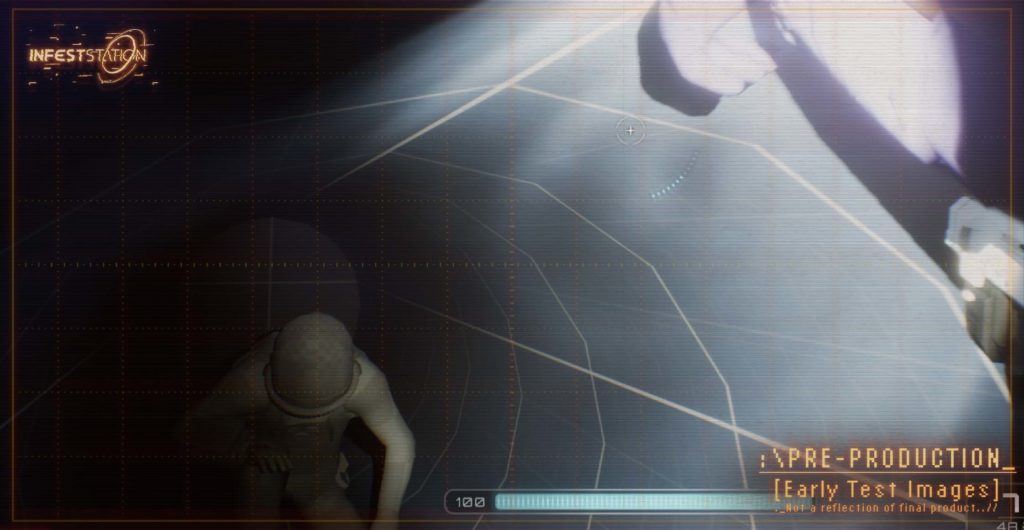CAUTION://_WORKS IN PROGRESS…
Hey Look, it’s another dev blog! “A dev blog is never late, nor is it early, it arrives precisely when it means too”….Right?
Well either way, it’s about time we start diving into the excitement of pre-production….Early Prototyping!

Early Prototyping?
So, what exactly is “early prototyping” anyway? It can mean many things to many different people, but for us, early prototyping is the point where we’ve begun unpacking trunk-loads of 2d and written design elements and start throwing them into Unreal to test them in action in the most efficient, roughest blocked-in way possible.
The general idea is to take those concepts and ideas, and figure out how they’ll actually exist within the context of a game. The nitty gritty things like player and world scale (how big of a hallway is a big hallway anyway?), player movement characteristics (does this walk speed make my space suit feel big?), general gameplay systems and subsystems (if a door opens and no one is around to hear it, is it still unbearably loud and squeaky?)…you get the idea.

There’s a lot about gameplay mechanics that can be easy to take for granted, but a well tailored walk speed, hallway width and height, jump and crawl sizes — stuff you might think is automatic or generally consistent between games — really benefits from the time and care of being sorted out from the very beginning.
Often we’ll use things like posed mannequins, staged props, and the ubiquitous “1 meter grid” wall material to help us nail down that sense of scale. This can be especially helpful before any kind of AI or non-player entities are online and running to ensure that spaces have enough room (or are constricted enough) to get the proper feel later on down the line when gameplay is up and running.

This is a great way to solve problems proactively and ensure that when we start building bigger systems — like our first environment level kits — that we’re not wasting time modeling, remodeling, scaling, and editing just to get basic proportions feeling good.
It also gives us spaces with a touch of atmospheric inspiration in them to get back-end systems up and running simultaneously.


Can’t forget about the Concept Art!
This is also the time when we get to have all sorts of fun working up our art direction via concept art. Since this is a pretty big topic on its own, I’ll save the majority of that content for another post, but suffice to say, we’re also having a lot of fun working toward the actual look and feel of environments, threats, tools, and more as well.

A Final Note in Amber Monochrome
You may have noticed something unusual going on with all the images in this post. For a website that’s all made up of nothing but blue / cyan accent colors…there sure is a lot of amber going on with that image overlay’s look, isn’t there?
Curious, indeed. They’re a bit halloween-ish colors though, aren’t they? Perhaps that would be a good time to talk more about them…
Author’s Note: For those reading this after the original posting date – you may have noticed that the website is NOT themed entirely in blue accent colors anymore. Welcome to the new look, ever a work in progress, likely to continue to evolve as we develop the game!
